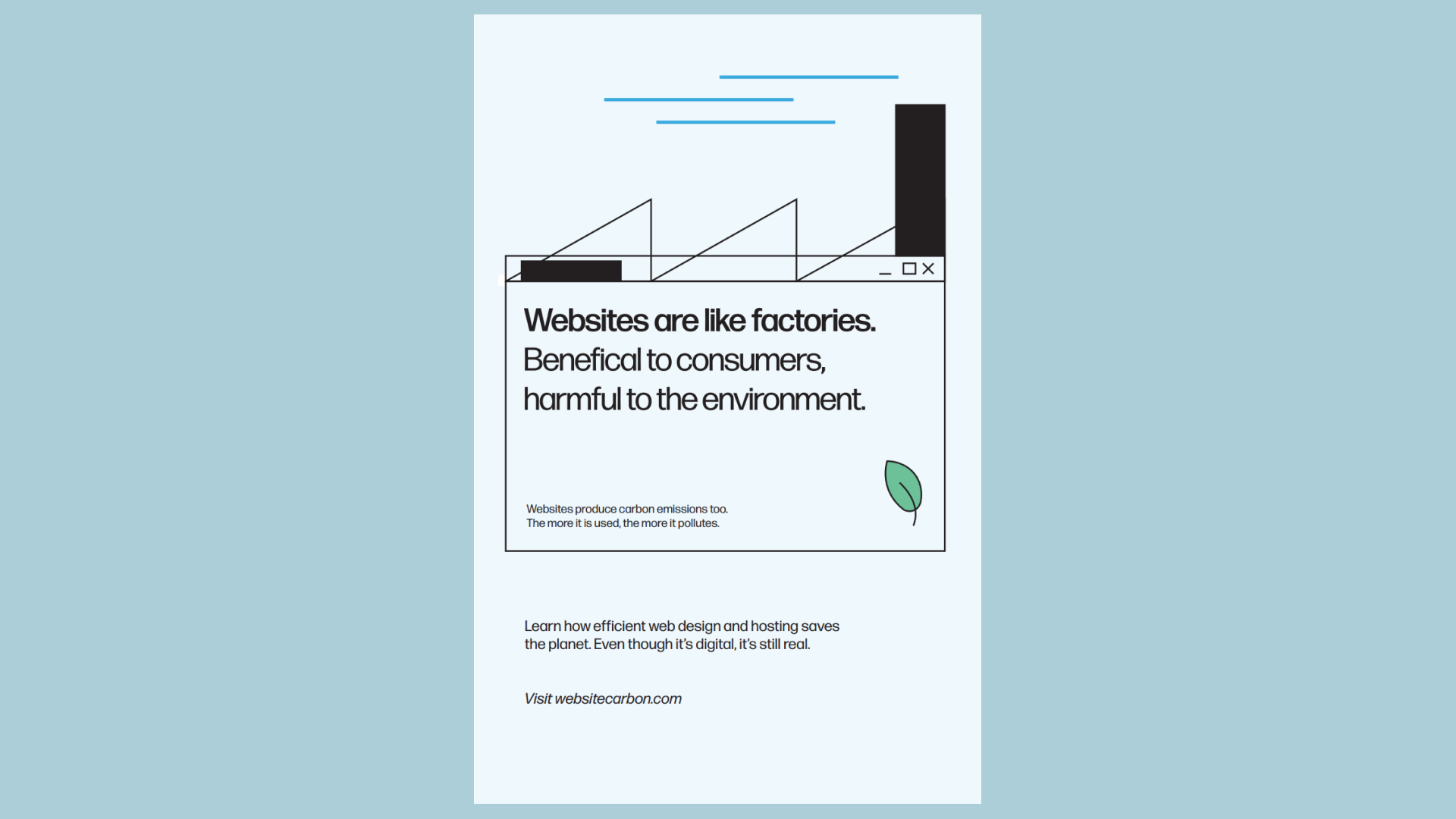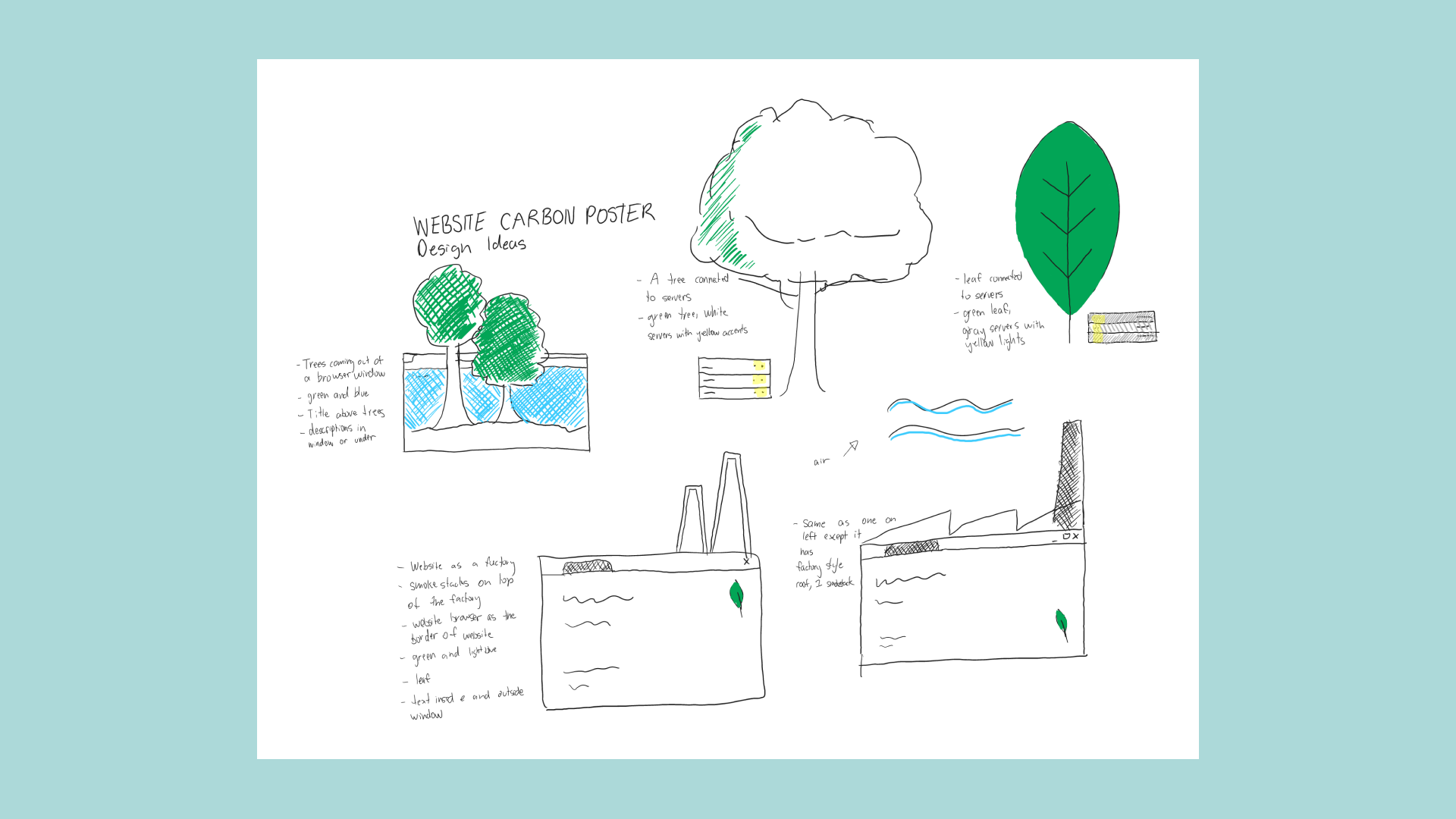GRAPHIC DESIGN — ENVIRONMENTAL & TECHNOLOGY
TGJ3M1
Poster Design
Website Carbon


Overview
This poster promotes how everyone, especially developers, need to mindful on how much carbon their websites releases. The poster has a main message and also text for people to learn more about the issue. This poster was made in Adobe Illustrator and combines shapes with lines and text to create a simple but unique design.
Details


Carbon emissions are harmful to the environment because they contribute to climate change. When carbon is released into the atmosphere, it traps heat and causes the Earth's temperature to rise. This warming can have a number of negative effects, including more extreme weather events, rising sea levels, and changes to ecosystems. These effects can lead to a variety of problems, such as flooding, droughts, and damage to crops, which can make it more difficult for people and animals to survive.
Carbon emissions are also harmful to human health. Fine particulate matter, which is created when fossil fuels are burned, is linked to a wide range of health problems, including heart disease, stroke, and respiratory problems. Additionally, air pollution caused by carbon emissions can aggravate existing conditions such as asthma, making them more difficult to manage. Furthermore, climate change can also increase the spread of diseases such as malaria and dengue fever, as well as other vector-borne diseases like Lyme disease.
Websites have carbon emissions because they require energy to run. The servers that host websites need to be powered in order to function, and that power is often generated by burning fossil fuels. Additionally, data centers, which are used to store and process the data that makes up websites, also consume large amounts of energy. As a result, the process of creating, maintaining, and accessing websites contributes to carbon emissions.
The carbon footprint of a website can vary depending on the number of visitors it receives, the complexity of its design, and the amount of data it stores. Streaming videos, images and audio on websites can contribute greatly to the carbon footprint. As the demand for internet access and online services continues to grow, it is likely that the carbon emissions associated with websites will also increase. Websites with high traffic are likely to generate more emissions than smaller sites. It's important to note that efforts are being made to reduce the carbon emissions of website such as using green energy, improving energy efficiency and using cloud-based services.